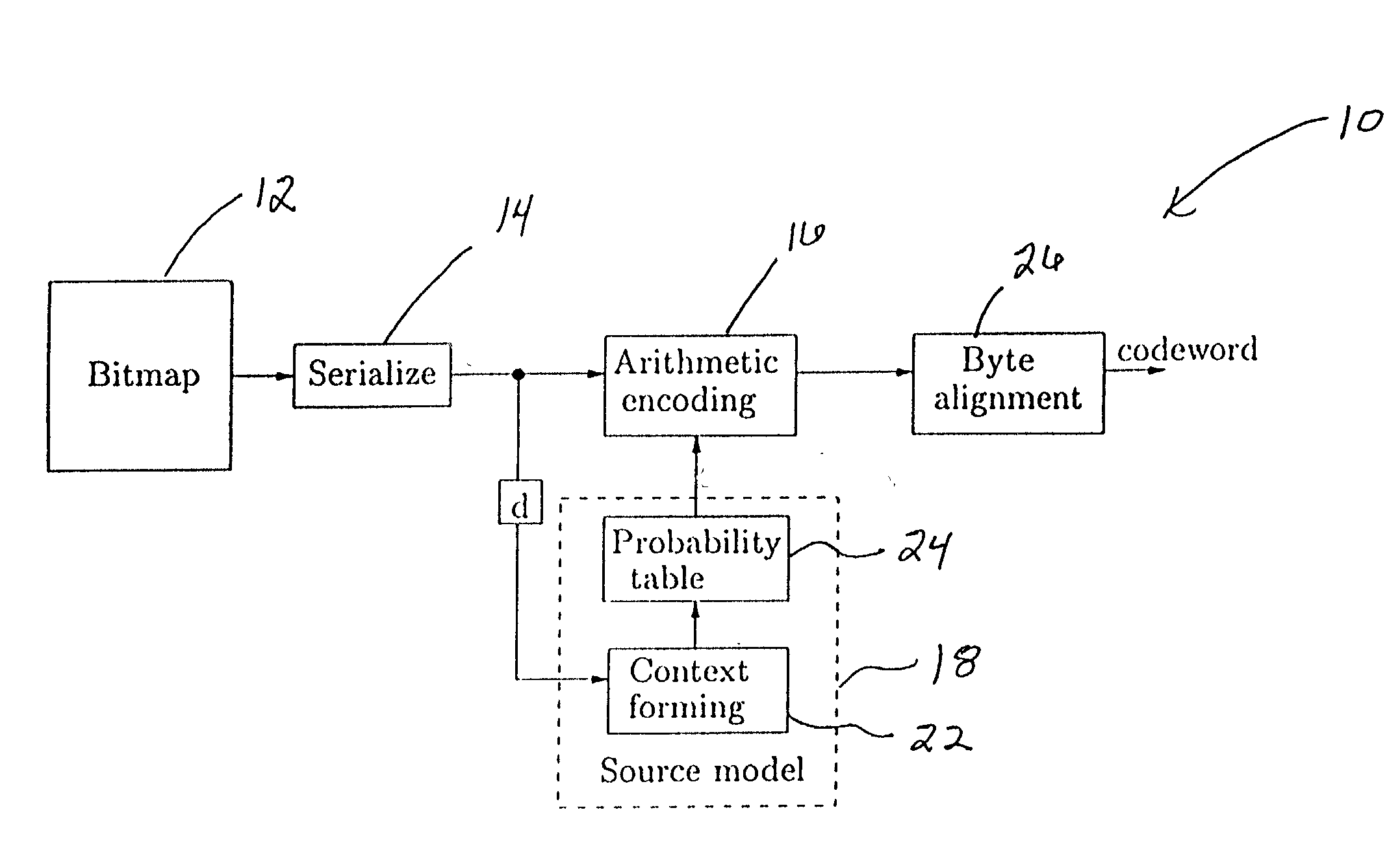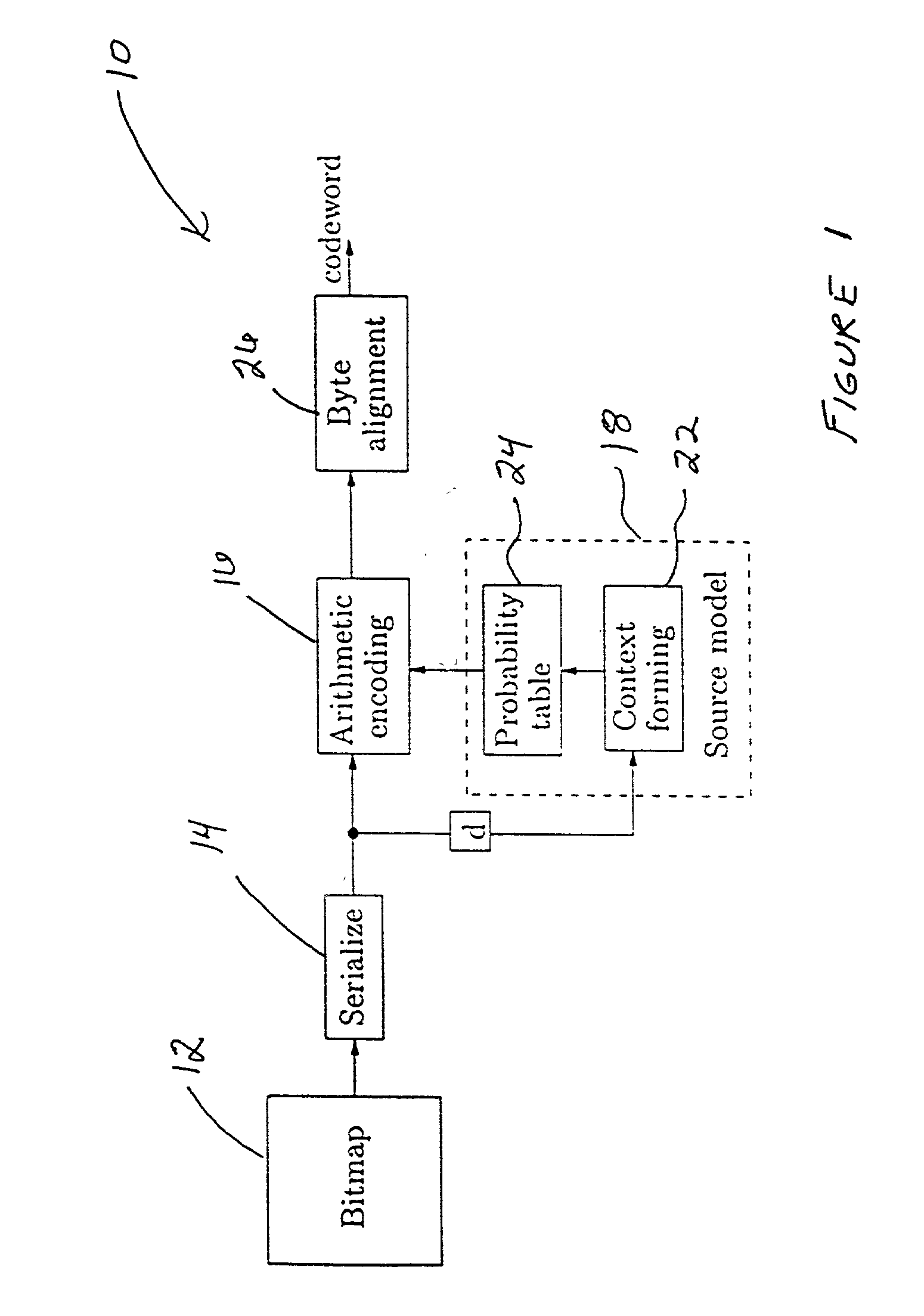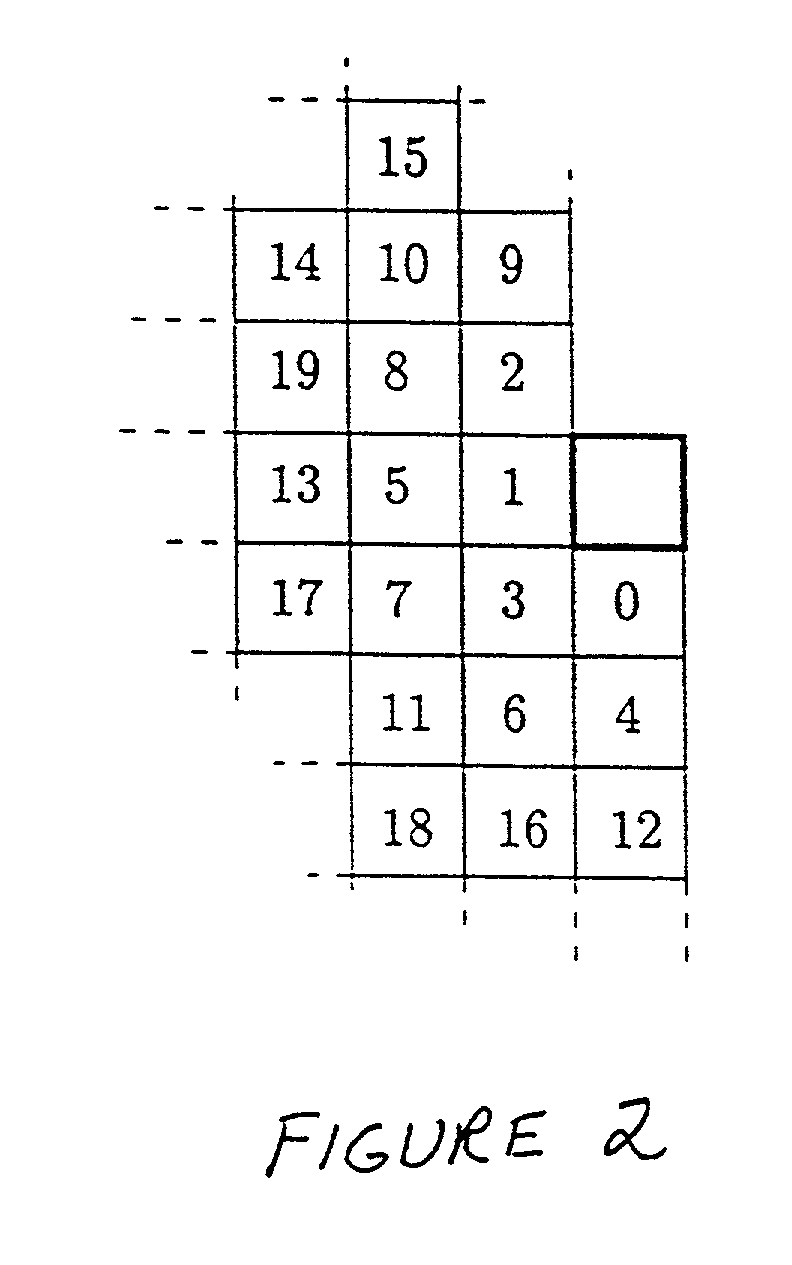Font compression and retrieval
- Summary
- Abstract
- Description
- Claims
- Application Information
AI Technical Summary
Benefits of technology
Problems solved by technology
Method used
Image
Examples
first embodiment
[0022] FIG. 1 is a block diagram schematically illustrating the encoder structure of a compression scheme according to the present invention for compressing data representing a set of symbols such as a font of Chinese or Japanese symbols or glyphs. Initially, it should be appreciated that the encoding procedures described can be carried out without time limitations so as to permit optimization of the size of the compressed data.
[0023] The encoder of FIG. 1 is generally designated by reference number 10 and is composed of a plurality of modules. Initially, a two-dimensional bitmap 12 representing a symbol or glyph of a font, is converted to a sequence x.sup.n=x.sub.1, x.sub.2, . . . , x.sub.n of bits by a serialize module 14 by scanning the bitmap according to some specified rule. Possible scan orders, for example, include row-wise, column-wise, diagonal or a more involved scan order as are well-known to those skilled in the art.
[0024] The sequence of bits output from the serialize m...
second embodiment
[0034] FIG. 4 is a block diagram schematically illustrating the structure of an encoder 40 according to the present invention. In FIG. 4, the probability table of the source model 18 of the encoder 10 of FIG. 1 is replaced by a prediction table 42 in a source model 48 in which each entry is one bit, indicating the most probable bit value in each context. The predicted value for each bit is exclusive-ORed with the actual bit by unit 44, producing a bit stream that is encoded by a Huffman code in Huffman encoder module 46 (see D. A. Huffman, "A Method for the Construction of Minimum-Redundancy Codes", Proc. IRE, vol. 40, pp 1098-1101, 1952.)
[0035] In this embodiment, in addition to the codewords, the index table and the length table, a description of the Huffman code must also be made available to the decoder. The optimization with respect to context size, etc. as described above with respect to the first embodiment, can be applied to this embodiment as well. The decoder structure for...
PUM
 Login to View More
Login to View More Abstract
Description
Claims
Application Information
 Login to View More
Login to View More - R&D
- Intellectual Property
- Life Sciences
- Materials
- Tech Scout
- Unparalleled Data Quality
- Higher Quality Content
- 60% Fewer Hallucinations
Browse by: Latest US Patents, China's latest patents, Technical Efficacy Thesaurus, Application Domain, Technology Topic, Popular Technical Reports.
© 2025 PatSnap. All rights reserved.Legal|Privacy policy|Modern Slavery Act Transparency Statement|Sitemap|About US| Contact US: help@patsnap.com



